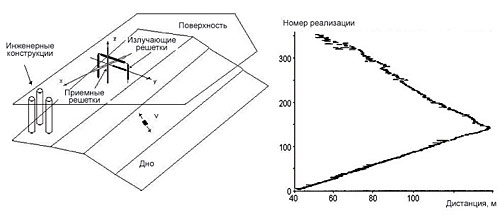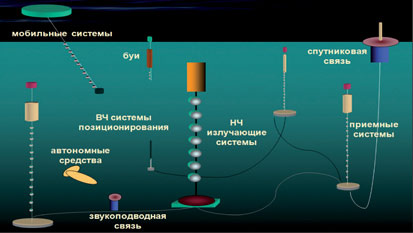Acoustic diagnostics and tomography of a shallow sea
Among the most important modern problems of LF hydroacoustics is the development of integrated network techniques for acoustic diagnostics of the ocean. This research trend stimulated by a series of foreign and Russian studies on acoustic tomography of the ocean and performed back in the 1970–1980s, combines solving both the direct problems of sound propagation in the actual ocean waveguides and the inverse problems on retrieving from measurement data the acoustic characteristics of the explored water area or of the natural or artificial inhomogeneities present in it. Since the early 2000s, new methods of acoustic tomography of a shallow sea, including various versions of mode and beam tomography, have been successfully tested at the IAP RAS; they can be the basis for the construction of advanced network-centric systems for ocean diagnostics.
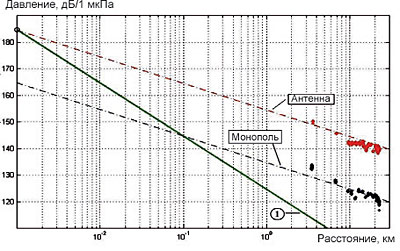
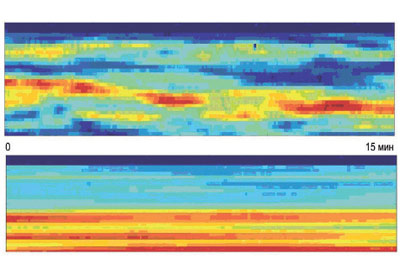
As distinct from the deep ocean, where sound almost does not interact with the bottom, shallow-water sound channels are characterized by significant absorption of a signal in sedimentary bottom rocks. This is an important factor promoting the development of the tomographic methods for the selective excitation and reception of the waveguide modes that are least sensible to the interaction with the bottom and, thus, to damping. One of these methods is the differential mode tomography previously proposed by A. G. Nechaev and A. I. Khilko, which is the basis for the approach to implementing a practical system of acoustic monitoring of a shallow sea, developed at the IAP RAS and called the low-mode pulse tomography (LMPT). The LMPT method is based on recording the effect of transformation of the mode composition of a low-frequency acoustic field in a shallow-water channel, attributed to sound scattering by localized inhomogeneities (surface or volume) in the channel; the carrier modes of a sounding signal should be the first-number modes of the lowest attenuation in the bottom. The possibility of elaborating a system of tomographic monitoring of a shallow sea on the basis of the LMPT has been shown numerically and then in a series of field experiments carried out by a large IAP RAS team headed by A. G. Luchinin and A. I. Khilko in the Baltic and Barents Seas. The implementation of these experiments was provided by the unique emitting and receiving antenna complexes specially designed at the IAP RAS (B. N. Bogolyubov and P. I. Korotin with their teams).
In particular, high efficiency of the selective mode excitation of a hydroacoustic waveguide by a multi-source array with controlled amplitude distribution was first demonstrated in these experiments. The reverberation level significantly reduced at a low-mode excitation of the channel by the antenna matched with the first mode of the waveguide (in comparison with the excitation by a monopole source); thus, the level of fluctuations (increase in spatio-temporal coherence) of the propagating signal also markedly decreased, which is extremely important for recording the effect of mode transformation of a signal in the channel.
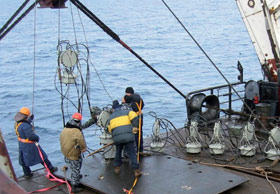
In addition to the acoustic tomography methods based on the mode representation of a sound field in shallow water waveguides, beam diagnostic schemes for sea areas were developed at the IAP RAS in different years. As applied to the problems of acoustic monitoring in coastal areas of the ocean, the IAP RAS scientists (A. I. Khilko, I. P. Smirnov, and A. I. Malekhanov) recently developed the method of pulsed beam tomography, which is based, similarly to the LMPT method, on the use of vertical emitting and receiving antenna arrays but involves co-processing of complex-modulated pulsed signals occurred in an underwater channel and having the form of higher-frequency (up to ~10 kHz) sound beams matched to the waveguide. A physical model of the method and a software-algorithmic complex with an interface of control and data representation was developed to optimize the tomographic system for specific areas of a shallow sea. Operability of the method was confirmed by numerical and then model field experiments performed in conjunction with staff of the JSC RI “Atoll” in the Ivankovsky Reservoir (the Moscow Region).
